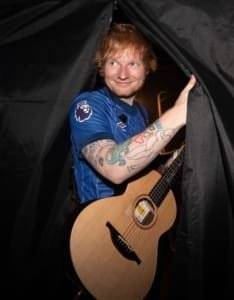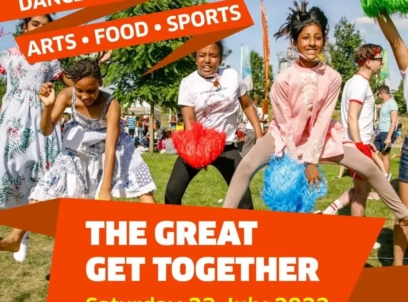What does it mean to own music? With multiple major artists facing legal battles over music copyright in recent years, this question seems more relevant than ever. In a digital world where technology puts an avalanche of music at our fingertips, it is vital that new and potentially vulnerable musicians have an in-depth understanding of how to protect their music through copyright. In this article, we will be unpacking all aspects of music copyright: recent landmark cases, how music copyright law works, and what you can do to protect your own music.
Music copyright cases in the courtroom have a history of being unpredictable and inconsistent. There is no clear, legal answer to what constitutes copyright infringement, which has led to confusion and distress for songwriters who can never be totally sure that they are working within their rights. This point is well-illustrated by landmark cases from the past decade.
Estate of Marvin Gaye vs Robin Thicke and Pharrell Williams
It’s difficult to talk about music copyright without mentioning the infamous ‘Blurred Lines’ case: in 2015, the estate of Marvin Gaye took Robin Thicke and Pharrell Williams to court over Gaye’s ’70s funk hit ‘Got To Give It Up’. As we look further into the case, the prosecution’s arguments seem strong, attesting that hooks, bass lines, keyboard chords, and harmonic structures are clearly stolen from Gaye by Thicke and Williams, who co-wrote ‘Blurred Lines’ together in 2012. However, when scrutinised, most of these similarities are tenuous, or too vague to justify copyright infringement.
Ultimately, the case boiled down to the general feel of the two songs, and whether this was similar enough to indicate plagiarism. The jury, after two days of deliberation, found Thicke and Williams guilty. This decision rocked the musical world at the time. How do you define a song’s ‘feel’, and what would this mean for the creative freedom of modern musicians?
Thicke and Williams moved to appeal the result in 2016. Alongside this appeal, over 100 musicians and industry professionals would stand in support of Thicke and Williams by submitting their expert opinions to the court; from Earth, Wind & Fire, to Fall Out Boy, to Hans Zimmer, it was truly a grand display of collaboration and unification for the sake of protecting creative freedom in music.
Despite these efforts, in 2018 a three-judge panel would uphold the initial judgement with a split decision. Judge Jacqueline Nguyen, who dissented, went on to say that ‘the judgement…establishes a dangerous precedent that strikes a devastating blow to future musicians and composers everywhere’ (The New York Times).
Estate of Ed Townsend vs Ed Sheeran

Whilst the ‘Blurred Lines’ result worried many musicians across the globe, the world of music would watch closely again in 2016, when the estate of Ed Townsend accused Ed Sheeran of using elements of Marvin Gaye’s 1973 song ‘Let’s Get It On’ (which Townsend co-wrote with Gaye) in Sheeran’s 2014 viral hit ‘Thinking Out Loud’. The obvious similarities between the two cases—both alleging that a modern pop-star stole elements from a ’70s Marvin Gaye song—would beg the question of whether or not history would repeat itself.
The case eventually came to trial in April last year, with the prosecution arguing that Sheeran had stolen melody fragments, a chord sequence, and a rhythmic pattern from ‘Let’s Get It On’. In response, the defence worked to demonstrate that these musical elements were not directly stolen, but were instead commonly used musical building blocks that anyone has the right to use; legally these building blocks cannot be owned, in the same way that a writer cannot own words and a photographer cannot own a camera angle. Instead, it is the unique ‘expression’ of these elements that an artist can own. Ultimately the jury decided, in under 3 hours, that Sheeran was not guilty.
After the verdict, Sheeran stated ‘I’m just a guy with a guitar who loves writing music…I will never allow myself to be a piggy bank for someone to shake’ (Mirror). Certainly, in this case we do have to wonder whether some of the plaintiffs had vested interests. Sheeran had already been brought to court twice over copyright disputes for other songs—in the first instance, involving Sheeran’s 2015 song ‘Photograph’, Sheeran opted to settle out of court, which may have set a precedent against him.
Many musicians saw Sheeran’s innocence as a major victory, with some artists celebrating the outcome as a restoration of creative freedom that the ‘Blurred Lines’ result had originally stripped away.
Radiohead vs Lana Del Rey
Not all cases of music copyright go to court, however.

Back in 2018, Radiohead and Warner Chappell threatened legal action against Lana Del Rey’s 2017 song ‘Get Free’ for infringing on the 1992 Radiohead classic ‘Creep’. Or at least that’s what Del Rey claimed through a tweet, explaining that Radiohead’s publishers were requesting 100% of the royalties from ‘Get Free’ and that she would be waiting to ‘deal with it in court’.
Warner Chappell quickly denied these allegations though, stating that they only asked for the writers of ‘Creep’ to be acknowledged as contributing musical elements to the verses of ‘Get Free’. Whilst no specific musical elements were named, the two songs include an identical and unusual chord progression, and similar melody shapes. Ultimately though, it is impossible to decipher what was actually going on behind the digital curtain.
Two months later, Del Rey stated at a festival in Brazil that the lawsuit was over. The case never went to trial, so it seems likely that Del Rey decided to settle with Radiohead and Warner Chappell out of court, although there is no way to confirm this. Since 2015, Taylor Swift, Sam Smith, and Justin Bieber, among other major artists, have chosen to settle their copyright disputes out of court rather than participate in a trial, perhaps to avoid the tolls that a long and expensive legal battle will inevitably bring.
How to protect your own music
Music copyright can be especially tricky for smaller artists who may not have the funds or the platform to properly represent themselves in a courtroom or settle out of court. Whether your music is being stolen or you are being accused of stealing from someone else, we’re now going to briefly go through what you can do to effectively protect your own music under copyright law.
Generally, there are two pieces of copyright for each song—one that protects the creative work/composition, and one that protects the physical recording. The former prevents people from stealing creative elements of your song, and the latter prevents people from just reuploading your song in its entirety. In the UK, as soon as a piece of music is written or recorded in tangible form, it automatically falls under copyright law.
Generally, the composition copyright owner will automatically be the composer. In the case of multiple composers or a separate lyricist, an agreement should be written up and signed which declares the respective share of each contributor. The recording copyright owner is often a record label or a producer, but this will vary from contract to contract.
After writing a song, it is important to keep a date-stamped file of the original recording and any other creative materials in case you ever need to prove when the song was first written/recorded. Make sure to keep a version history, and never delete any original files. If the song was written by hand, you can take a date-stamped photograph of any creative materials.
When uploading a song to a public database such as social media or any music streaming platforms, it can be a good idea to add a copyright notice to your work as a deterrent; people are less likely to copy from your song if the copyright is clearly marked. Copyright notices are formatted with the copyright logo, the publication year, and the name of the copyright owner(s). For example:
‘© 1995 Parlophone Records/EMI Records (UK) Ltd’
Or:
‘℗ 2023 Taylor Swift’
(Note that an encircled P is used for the copyright of a specific sound recording, whilst an encircled C is used for the copyright of the creative work.)
What to do if you’re a victim of music copyright infringement

If you believe that someone has stolen your work, there are a number of actions you can take.
Firstly, you should contact the offending party and inform them that they have infringed on your song’s copyright. Make sure to include proof of copyright in your message, and request that they take any infringing material down from publicly accessible places.
If this fails, you can contact the host website(s) instead (e.g. Spotify, YouTube, SoundCloud) through their dedicated copyright webforms or email addresses. Again, make sure you include proof of your copyright, and clearly lay out all of the details.
If this also fails, then you can consider filing a lawsuit. Make sure that you have an overwhelming amount of evidence gathered to prove that the work is originally yours and that the offending party is actually infringing on your copyright. Don’t go to court if you think that someone might have stolen a singular riff or an unusual chord progression from you; coincidences happen. In the worst of situations you could even face counterclaims for defamation, so never get the court involved on a whim.
Conclusion
So, as we’ve explored, the turbulent world of music copyright presents us with a number of things to consider. Although music copyright is incredibly important to protect the livelihood of musicians and the integrity of their music, the question of what it really means to ‘own’ music can be tricky to navigate, as demonstrated by the unpredictability of music copyright trials.
Whilst modern sites such as Spotify, SoundCloud, and YouTube are invaluable platforms for new musicians, they also complexify issues of copyright with every user freely having access to a vast library of other people’s music to potentially lift elements from. As a result, it is now more crucial than ever for young and vulnerable musicians to understand how music copyright works and what they can do to effectively protect themselves.
By making an effort to understand the delicate landscape of music copyright today, we can all do our part to make sure that everyone is fairly protected, whilst preserving creative freedom. Because for many musicians, nothing is more important than the liberty to express their passion.


